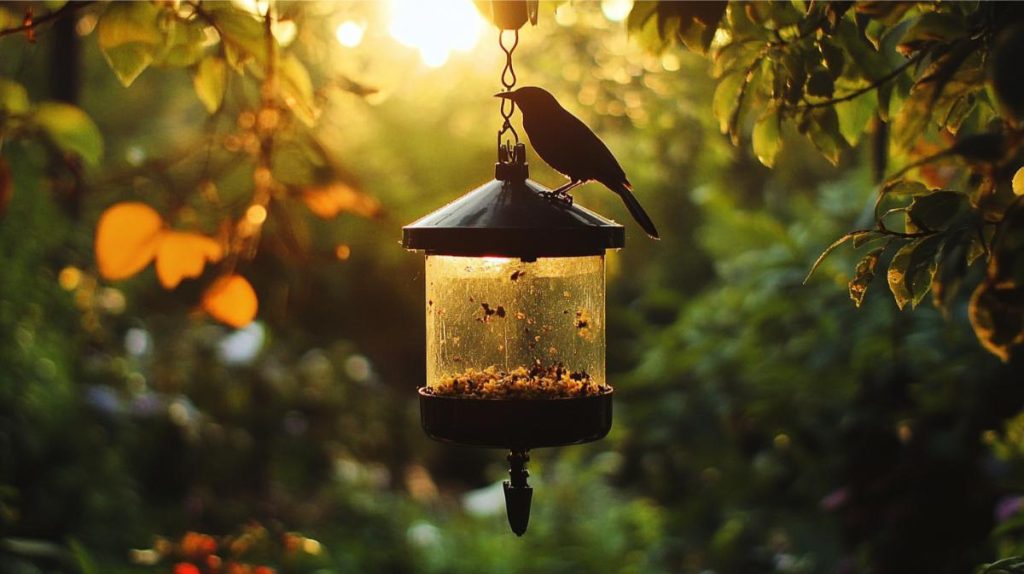Want to transform your backyard into a bustling home for wildlife? With the right garden layout, you can create a space that’s irresistible to a variety of animal visitors.
A well-designed wildlife garden can attract birds, butterflies, bees, and even small mammals, turning your outdoor area into a lively ecosystem.
Think of your garden as a five-star hotel for critters. You’ll want to offer them the basics: food, water, and shelter.
Start by incorporating native plants that provide nectar and berries. Add a bird bath or a small pond for a refreshing drink and a splash.
Don’t forget to include some cozy hiding spots like dense shrubs or small brush piles where animals can rest and feel safe.
Remember, you don’t need a huge space to welcome wildlife. Even a tiny balcony can become a pit stop for pollinators with the right container plantings.
So roll up your sleeves and get ready to play host to nature’s cutest guests!
Key Takeaways
- Design your garden with diverse plants, water sources, and shelter to attract wildlife
- Even small spaces can become thriving habitats with the right elements
- Creating a wildlife-friendly garden benefits local ecosystems and provides endless entertainment
Designing Your Garden to Welcome Wildlife
Creating a wildlife-friendly garden is fun and rewarding. You can turn your outdoor space into a bustling nature haven with a few simple tricks.
Let’s look at some ways to make your garden a magnet for furry and feathered friends.
Choosing the Right Plants for Attraction

Native plants are your best bet for attracting local wildlife. They’re adapted to your climate and provide familiar food sources.
Try planting a wildflower meadow with daisies and other colorful blooms. Butterflies will thank you!
Don’t forget about shrubs and trees. Holly and ivy offer great shelter, while honeysuckle, jasmine, and wisteria provide nectar for pollinators.
English lavender is another winner – it smells amazing and bees love it.
Mix it up! A variety of plants means a variety of visitors. Think about different flowering times to keep the buffet open all year round.
Incorporating Water Features and Ponds
Who doesn’t love a splash? A garden pond is like a wildlife magnet. It attracts everything from birds to beneficial insects.
If you’re short on space, don’t worry. Even a small water feature can make a big difference. Try a birdbath or a shallow dish filled with pebbles and water.
Keep it natural. Use native aquatic plants and avoid chemicals.
Your pond will soon be teeming with life. Frogs, newts, and dragonflies might move in before you know it!
Providing Shelter and Nesting Opportunities
Every creature needs a cozy home. You can help by providing nest boxes for birds and bats. Place them high up in trees or on walls.
Don’t be too tidy! Leave some areas of your garden a bit wild. A log pile or leaf litter makes a perfect hideout for insects and small mammals.
Plant a hedge instead of building a fence. It’s great for nesting birds and provides a wildlife corridor. Bonus: it looks prettier too!
Lastly, start a compost heap. It’s not just good for your plants – it’s a five-star hotel for many beneficial creatures. Who knew garbage could be so glamorous?
Creating Spaces for Diverse Animal Visitors
Your garden can be a bustling hub for all kinds of critters. With a few smart tweaks, you’ll welcome a mix of feathered, fuzzy, and buzzing guests.
Attracting Feathered Friends – Birds and Beyond

Want to turn your yard into a bird paradise? Start by hanging some bird feeders filled with tasty treats. Sunflower seeds are a hit with many species.
Don’t forget a birdbath for splashing and sipping!
Trees and shrubs offer cozy spots for nests. Why not add a bird box or two? It’s like offering a tiny apartment to your winged pals.
Mix up your plantings. Berries, seeds, and nectar-rich flowers will keep birds coming back for more.
Remember, different birds like different snacks. A varied menu means more visitors!
Catering to Insects, Butterflies, and Small Mammals
Bugs need love too! Create a bee hotel by drilling holes in a wood block. It’s like a five-star resort for solitary bees.
Butterflies adore colorful blooms. Plant some butterfly bush or lavender and watch them flock to your garden.
Don’t forget food for caterpillars too – they’re future butterflies after all!
For hedgehogs and other small mammals, leave some wild areas. A pile of leaves or a log stack makes a cozy home. Plus, it’s less work for you. Win-win!
Gardening for the Seasons: Year-Round Welcomes
Your garden can be a wildlife hotspot all year long. Here’s how:
- Spring: Plant early bloomers like crocuses for hungry bees
- Summer: Keep birdbaths full during hot days
- Fall: Leave seedheads on plants for birds to snack on
- Winter: Put out extra bird food when it’s chilly
Think vertically too! Climbing plants offer shelter in all seasons. Plus, they make your garden look lush and full.
Remember, a messy garden is a happy wildlife garden. So don’t be too tidy – your animal visitors will thank you!
